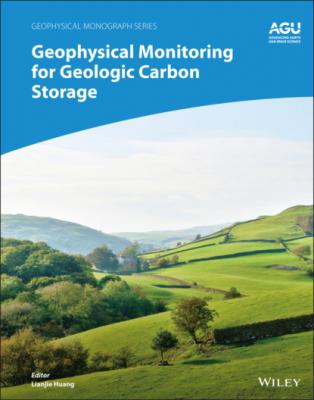Geophysical Monitoring for Geologic Carbon Storage. Группа авторов
Чтение книги онлайн.
Читать онлайн книгу Geophysical Monitoring for Geologic Carbon Storage - Группа авторов страница 47

Note that
Equation (5.11) indicates, in contrast with the fracture parallel to the core axis, η M can still have an impact on the Young's modulus of the entire core sample.
Figure 5.8a and b shows predictions for the Young's modulus of the fractured samples during scCO2 injection, based upon equations (5.8) and (5.10), respectively, for a range of η D values. Based upon the CT images of scCO2 distribution from the experiment, the substitution of the fluids was assumed only for the fracture by changing η M as a function of the scCO2 saturation of the entire core. In contrast, for Figure 5.9, the substitution was assumed to happen throughout the sample. The poroelastic parameters of the rock were evaluated from the experimentally determined undrained Young's modulus and shear modulus of the rock at the beginning of the injection experiment, and a mineral bulk modulus of quartz was assumed (K s = 38 GPa). Note that the experimentally determined dry elastic moduli were not used, because saturating the sandstone with water resulted in chemical softening of the rock matrix (both Young's and shear moduli decreased). Parameters used in the analysis are summarized in Table 5.2.
Figure 5.8 Fluid substitution modeling of the impact of fracture compliance using isotropic Gassmann models. Compare with the experimental results in Figure 5.5a and b. For (a) the core‐parallel fracture case, fluid substitution is assumed to happen only within the fracture. For (b) the core‐perpendicular case, it is assumed for the entire core. For better agreement between the models and the experiment, the shear modulus was slightly increased for the both cases, and the results are shown in dotted lines.
In Figure 5.8, qualitatively consistent with the experiment, large η D resulted in Young's modulus values that did not depend upon the presence of scCO2 in the fracture. The model, however, does not show good quantitative agreement with the experiment, mostly underestimating the effect of the fracture and scCO2 injection. This may be attributed to the additional effect of compliant interfaces between the sample and the metal bars as mentioned earlier, but also to the use of an isotropic and homogeneous Gassmann model for representing possibly anisotropic rock. Particularly, small errors in the isotropic shear modulus can have a large impact on the fluid substitution. In Figure 5.8a, in broken lines, examples are shown for the case with a shear modulus, which is ~2% larger than the experimental value, resulting in better agreement of the Young's modulus values for the intact sample.
5.4.2. Frequency‐Dependent Fluid Pressure Diffusion Effect for Core‐Perpendicular Fracture Cases
Compared with the core‐parallel fracture case, the modeling results of the core‐perpendicular case are qualitatively different from the experiment (Fig. 5.8b). Although the impact of the fluid substitution on the Young's modulus (through changes in the drained normal fracture compliance and the storage fracture compliance) is clearly seen, the model predicts much smoother and more monotonic changes than the experiment. (Note that, in Fig. 5.8b, similar to the core‐parallel case, assuming a larger shear modulus by 4.5% results in better predictions for the intact core case.) This is because equation 5.10 assumes that reductions in the fluid bulk modulus by scCO2 injection occur throughout the sample (i.e., quasi‐static assumption). In reality, because of the finite frequency of the experiment, the effect of bulk fluid modulus reduction is limited by the fluid pressure diffusion length (the relative amplitude decays to e –1 over the distance) in the water‐saturated part of the rock. This is given approximately by (e.g., Pride, 2003)
(5.12)
where k 0 is the static permeability of the rock (34.5 md) and η f is the fluid viscosity (0.47 cP). For a frequency of 1.5 kHz and the material properties in Table 5.2, δ D is computed as 12.5 mm (Carbon Tan #1 core) and 13.6 mm (Carbon Tan #2 core).
Attenuation of the Young's modulus appears to be more strongly affected by the finite frequency effect than the stiffness (the real part of the moduli), as seen in the increasing attenuation during the experiment (Fig. 5.5 a and c). Particularly, for the core‐perpendicular fracture case (Fig. 5.5 b and d), the frequency effect is quite dramatic. Figure 5.9 shows the observed changes during scCO2 injection into Frac IIa and Frac IIb samples, extracted from Figure 5.5b and d and correlated to the X‐ray CT images of scCO2. In contrast to the behavior predicted by the Gassmann model, the largest changes in the Young's modulus occur once scCO2 reaches the fracture (pore space CO2 saturation of the core ~2% for Frac IIa and ~5% for Frac IIb), corresponding to a peak and a subsequent rapid drop in the attenuation. Attenuation exhibits secondary increases as scCO2 invades more of the fracture and the rock matrix.